The story of Goldman-Sachs, the mystique of the firm and the interest, excuse the pun, it has created, lends much credence to the view of the powerful, influential, yet ultimately precarious and fragile role of the ”Court Jew ”; individuals perceived as functioning to extract revenue from peasants and artisans on behalf of the crown and nobility while engaging in unfair competition with burghers and guilds. In fifteenth-century Germany Jews became pawns in power struggles between emperors and nobel estates, and the urban communes. The struggles were frequently punctuated by blood libel accusations, expulsions, and at the least cries of ”bloodsuckers and leeches”. In some respect the dynamic, as evidenced by the ongoing mortgage default crisis, shows much of the same template of greed and over-reaction.
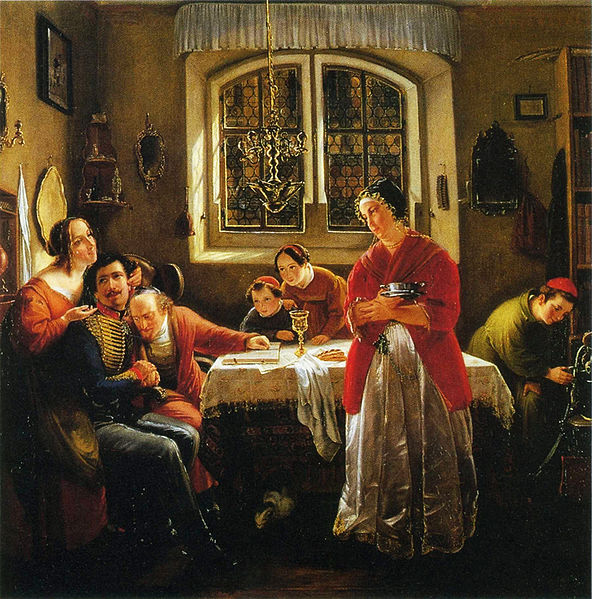
''In his 1833 painting “The Return of the Jewish Volunteer From War,” Oppenheim showed the Jews’ struggle to define their individual and collective identities within the framework of existing German perceptions. Suggesting that Germany saw its Jews in an unflattering, misguided light, he sought to emphasize that the Jews had earned their rights by their loyal and enthusiastic participation in the Napoleonic Wars but, with Napoleon’s defeat, the 1815 Congress of Vienna rescinded the Jews’ emancipation rights '' Moritz Oppenheim
Jewish courtiership has flourished as a highly significant social phenomenon in various medieval societies and during the modern period. Joseph Suss Oppenheimer is an extreme case ; he spent many insult laden months in prison before being sent to the gallows in 1738, a destiny he shared with many of his medieval Jewish predecessors. Their common fate brought many of them down from the heights of success, power and honor. It is often a double image of states of fortune and misfortune. Much like Oppenheimer, it is Blankfein’s and his associates worldly acquisitions that have given rise to much of the envy and animosity that have underlined the hearings process. The sensationalist potential has created a public involvement similar in public outrage to the material excesses of Oppenheimer as symbol of a malignant materialism. From the Middle Ages on, the fall of prominent medieval Jewish courtiers was often not only painful and humiliating but also tragic. A large number of Jewish courtiers forfeited their lives after losing the favor of their patrons or in the wake of the rebellions or riots that were sometimes directed against the local Jewish population.
Unlike the Biblical ”Court Jew” Mordechai in the Book of Esther, who ”sat at the king’s gate”,there were very few happy endings for the court Jew of the Middle Ages. The Jewish courtier’s vulnerability and weakness, which made him attractive to both Muslim and Christian rulers who surrounded themselves with aides and advisors who enjoyed no external political support, were fatal in times of trial. The arrows of anti-Jewish hatred prevalent within local society could be easily directed at these obvious targets. The success of the Jewish courtiers created cognitive dissonance within the population between what is construed as the appropriate status of the Jews according to Muslim religious law or Christian theology and the position of a Jewish courtier at the summit of power.
Selma Stern, in her study on the age of Absolutism in Europe, portrayed the Court Jew as a ”product of his time, a product of the particualr combination of Court absolutism, mercantilism and baroque culture.”: ”The Hofjude differed from the Court Jew of the earlier period not only in that his activities were of a more varied nature and embraced finance, diplomacy , commerce and poitics, but also in that he possessed a remarkable degree of industriousness and restlessness, a great interest in speculation and action, a strong desire for success, a lust for money and profit, an ambition to climb higher and higher and to assimilate as completely as possible to his environment in speech, dress, and manner”
Despite the assertion of ”product of the time”, there seems to be an unbroken, though perhaps not linear line; striking similarities between then and the present, with Goldman-Sachs and Lloyd Blankfein as but one mediatized example. Certainly no different in hopes for advancement and in the close relations they cultivated with their masters, or largest shareholders, through an expertise at safeguarding power through wealth. The hearings have certainly lent more credence to various stands of conspiracy tinged ideas, some from credible and respected sources, regarding possible Papal manipulation of Jews as fall men and patsies for the puppet masters:
”Then there was the curious story in the New York Times about Gary Krupp. A Jewish medical machinery salesman from Long Island who has no formal training in history but who has emerged as “the Vatican’s most outspoken Jewish ally in a heated debate at the crux of tensions between Roman Catholic and Jewish leaders and historians: whether Pope Pius XII, the pontiff during World War II, did as much as he could have to save Jews from the Holocaust.” Having already been knighted by John Paul II for medical services to the Church, Krupp has now set up a foundation whose purpose it is to whitewash the sins of the man know to the world as ‘Hitler’s Pope.’ The Times’ article quoted leading Vatican officials as saying that if not for Krupp it would be extremely difficult for the Church to move forward with its plans to declare Pius XII a saint.
Now, it’s not difficult to understand why the Catholic Church would seek a court Jew to help them clean up Pius. And it’s not particularly difficult to understand why a Jewish businessman, ignorant of history, would be willing to perform the role and take pictures with Pope Benedict at Castel Gandolfo. What is perplexing is how the mighty Catholic Church would have to fall back on
ng Island nobody to help them canonize a man who served as Pope for almost twenty years.…Of the hundreds of seventeenth and eighteenth-century court factors of greater or lesser means, only a few were able to maintain their wealth and status for more than three generations. Samson Wertheimer, who helped Austria out of its financial crisis after Samuel Oppenheimer’s death, was one of the few never threatened by bankruptcy in his lifetime.
The ephemeral nature of most of the firms founded by Court Jews is one striking aspect of their history. An additional element is that of their individual fates, as well as those of their families, often were tragic. The hanging of Jud Suss and of master of the Mint Lippold were exceptions, but lengthly terms of imprisonment, cruel torture, and the expulsion of wives and children were fates suffered by not a few court factors; conditions sometimes exasperated by their own internecine struggles with competing co-religionists which illustrated the cracks in the myth of a network of solidarity.
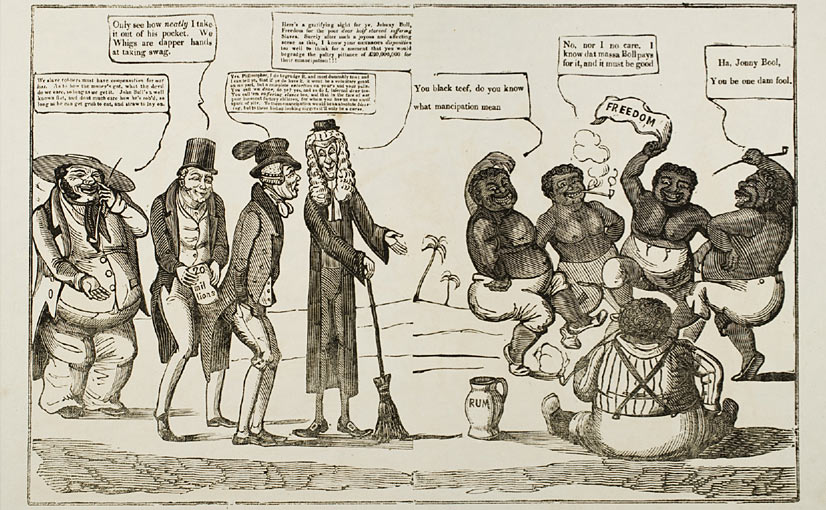
“Documents from Britain’s national archives showed that Nathan Mayer Rothschild had allowed the use of slaves as collateral in banking dealings with a slave owner, while Freshfields’ founding partner James William Freshfield acted as a trustee in deals involving Caribbean slave plantations, the FT reported. Freshfields said it had not been aware of the documents, which academics at University College London are studying.”
Is Christianity and banking compatible? Yes,” said John Varley, chief executive of Barclays PLC. “And is Christianity and fair reward compatible? Yes.”… Lloyd Blankfein, CEO of Goldman Sachs Group Inc., told the Sunday Times of London he is “doing God’s work.” And Goldman international advisor Brian Griffiths was even more explicit in aligning his work in high finance to the “message” of the Gospels: “The injunction of Jesus to love others as ourselves is an endorsement of self-interest,” Mr. Griffiths was reported as saying. “We have to tolerate the inequality as a way to achieving greater prosperity and opportunity for all.” ( Charles Lewis, National Post, nov.14/09 ) Amen; no need to flip coins into the collection tray, we’ll just take it off your monthly statement.
These congruencies between Jesus, god and money, does indicate that the Church of the Lucre is a religion in itself; what John Lennon would call the fascist strand of Christian faith based market religion. On March 4, 1966, this quote of John Lennon was printed in an interview by reporter Maureen Cleave in the London Evening Standard:
“Christianity will go. It will vanish and shrink. I needn’t argue with that; I’m right and I will be proved right. We’re more popular than Jesus now; I don’t know which will go first – rock ‘n’ roll or Christianity. Jesus was all right but his disciples were thick and ordinary. It’s them twisting it that ruins it for me.”
He was, as she reported, reading extensively about religion at the time. It was a small part of the article. No one took notice of it in Britain. ”It was another piece of truth that the fascist Christians picked on. I’m all for Christ, I’m very big on Christ. I’ve always fancied him. He was right. As he said in his book, you’ll get knocked if you follow my ways.”
As stated in Vatican Assassins III, Goldman Sachs is nothing more than an international banking house for the Jesuit papacy. Several notorious Knights of Malta have been the true power brokers of Goldman, including Geoffrey T. Boisi . Boisi is also a member of Rome’s Trilateral Commission, a former CEO of JPMorgan Chase, a member of the Board of Directors for Freddie Mac, an overseer of the Wharton School (which Papal Knight Donald Trump attended), a trustee of Jesuit Boston College and was honored by Pope John Paul II becoming a “Steward of St. Peter.” True to typical Vatican policy, the Order has placed a Jew in the foreground while keeping its White Gentile Knights in the background. Chief Executive Officer Lloyd Blankfein, openly leading Goldman, he is merely another “Papal Court Jew” doing the bidding of his master in Rome, Pope Benedict XVI. The “Vicar of Christ” has declared that Goldman Sachs (with its up front, openly notorious Jewish business name) is doing “God’s Work,” which description is clearly a reference to Opus Dei—”God’s Work.” A Founding Member of the Pope’s New York City-based Council on Foreign Relations, The Goldman Sachs Group, Inc. (also based in New York City), is the most powerful investment banking institution within the Pope’s 14th Amendment American Empire. And when public outrage once again is directed against the Wall Street giant due to another massive defrauding of its investors, Rome has ensured that a Jew will take the blame—further inciting anti-Jewish fury in America.
How the Goldman-Sachs saga will end remains to be seen, and the fate of Lloyd Blankfein may appears swinging towards his dismissal. Historically, the fall of Court Jews from the heights of fame and economic fortune to the bottomless depths of poverty, torture, prison and even execution showed how suddenly their fate could turn. The unhappy stories of many court factors may or may not be present in these contemporaries’ consciousness, but were reflected in the admonitions found in Jewish moral literature warning against the caprices of wealth and extravagant conduct.
The profile of Blankfein, from lower middle class, white collar background is a classic study of someone willing to use his opportunity to extricate himself from the position of being on the fringes of society by assuming a notorious function; a type far from creating the economic system’s conditions of development, but prepared for his firm, to implement the system’s rational, performance oriented norms faster than the competition; someone willing to be exploited to raise money and mobilize financial sources.
‘Lloyd Blankfein has admitted that he believes Goldman Sachs has no moral obligation to tell clients it is betting against a product it is asking them to buy. The stark admission – made by the bank’s chairman at the end of a more than nine-hour marathon hearing before the US Senate – came in spite of his assertion that “I think people trust us” as he tried to fend off accusations that Goldman inflated the US housing bubble.
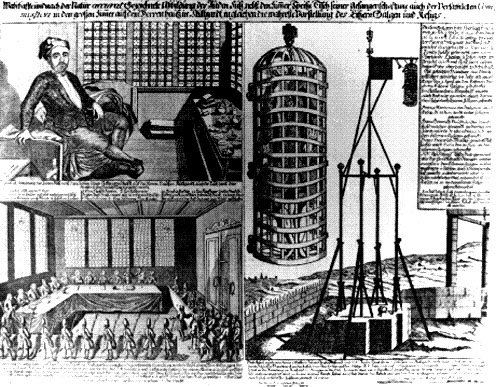
Josef Oppenheimer (Jud Süß) in prison, hearing the verdict, and after execution. From a contemporary copper engraving.
Senator Carl Levin told the veteran banker that he “wouldn’t trust” Goldman as he repeatedly asked whether the bank would disclose its position “when they’re buying something you solicit them to buy, and then you’re taking a position against them?”‘


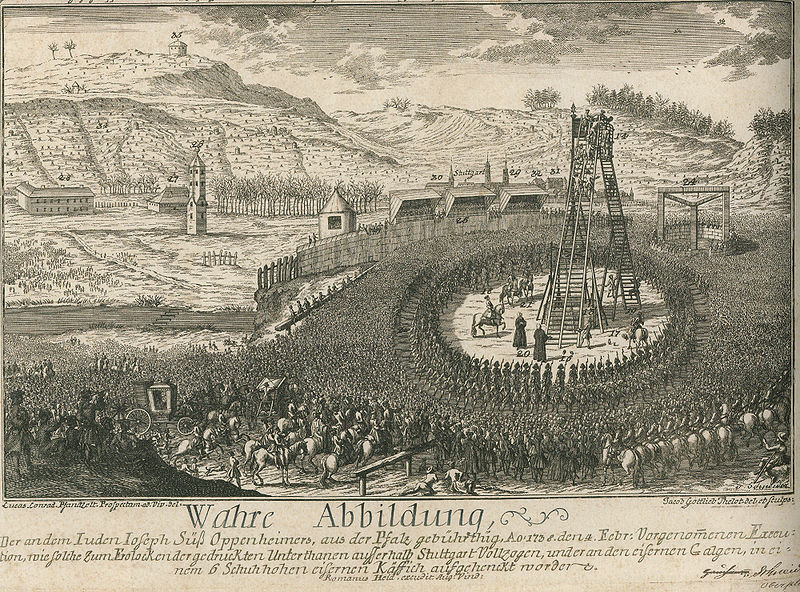
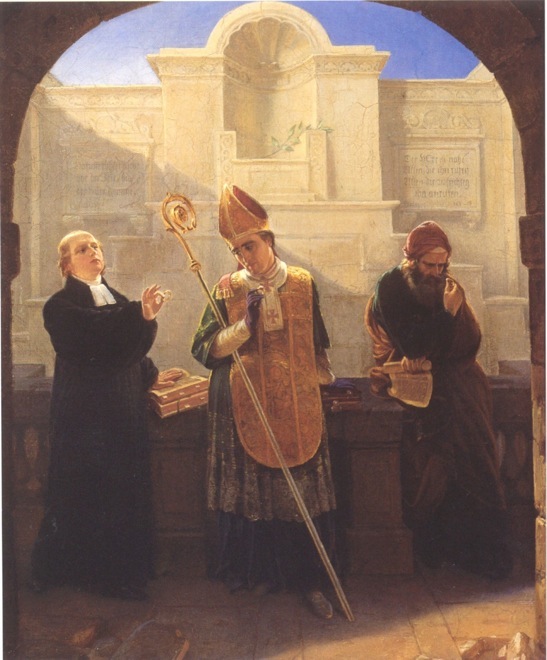
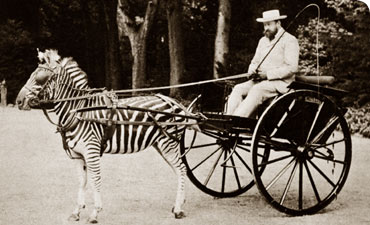
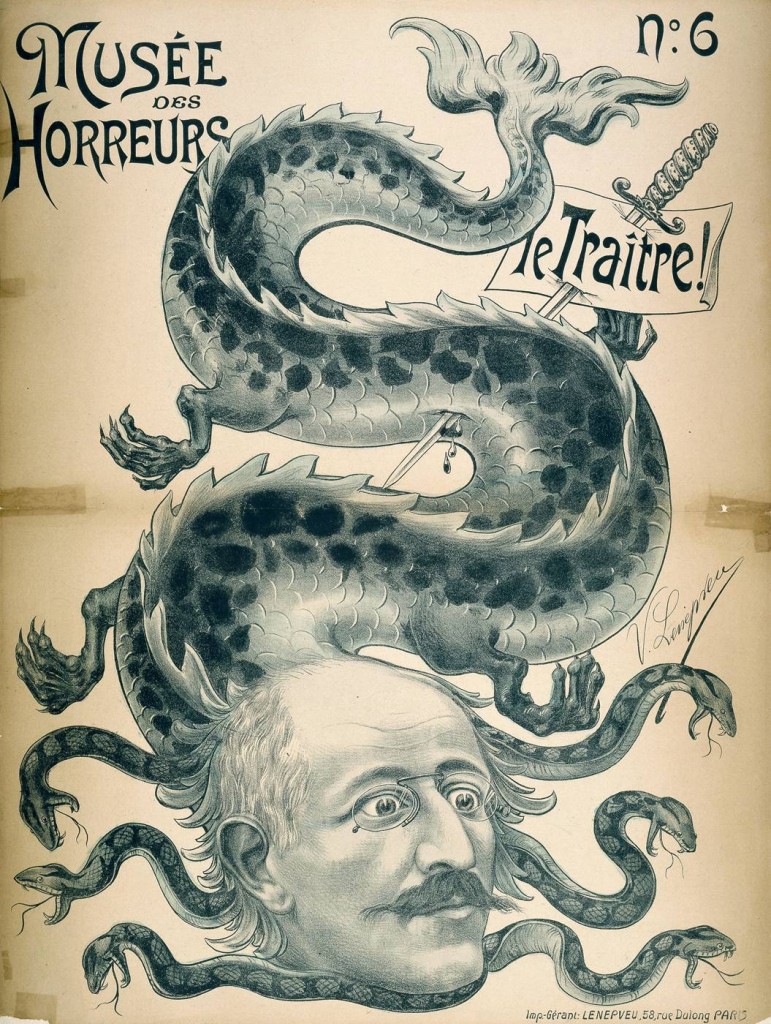
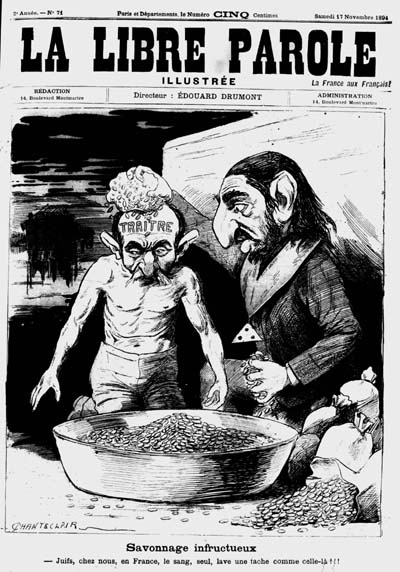
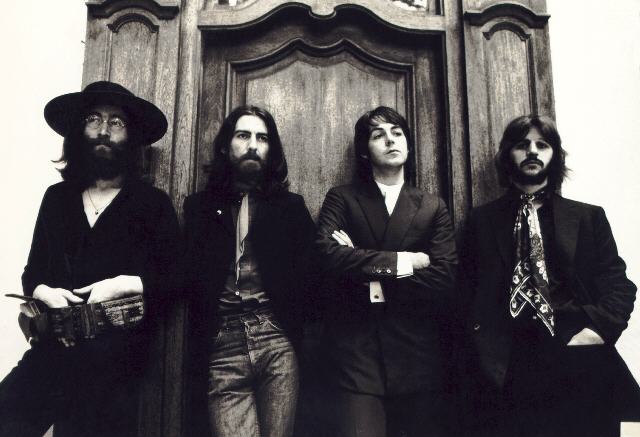
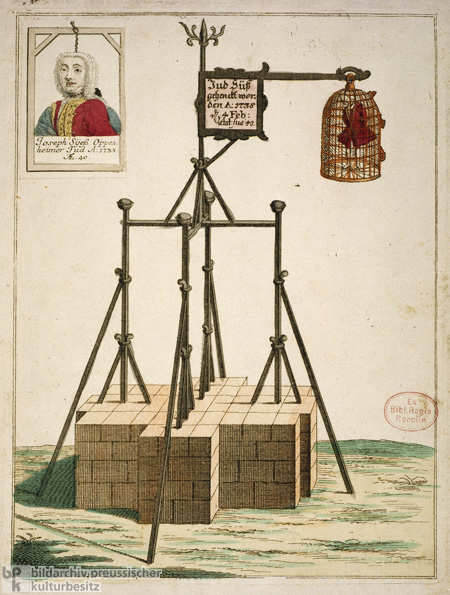



 COMMENTS
COMMENTS